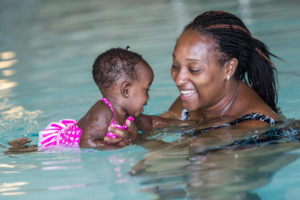The purpose of this website is to provide relevant and timely information about your health and wealth with an emphasis on Black Americans. One of the often asked questions is that the data about drug medications doesn’t apply to Black Americans.
Jay Harold agrees that a more representative group should be used during clinical trials to test drugs. Here’s one case where this happened.
Solosec1 (secnidazole) a drug made by Symbiomix Therapeutics was approved on September 15, 2017 by the Food and Drug Administration (FDA). Solosec is used to treat adult women with vaginal infections caused by bacteria known as bacterial vaginosis.
What is bacterial vaginosis?
Bacterial vaginosis2 (BV) is a condition that happens when there are too much of certain bacteria in the vagina. This changes the normal balance of bacteria in the vagina.
How common is bacterial vaginosis?
Bacterial vaginosis is the most common vaginal infection in women ages 15-44.
How is bacterial vaginosis spread?
Researchers do not know the cause of BV or how some women get it. We do know that the infection typically occurs in sexually active women. BV is linked to an imbalance of “good” and “harmful” bacteria that are normally found in a woman’s vagina. Having a new sex partner or multiple sex partners, as well as douching, can upset the balance of bacteria in the vagina. This places a woman at increased risk for getting BV.
We also do not know how sex contributes to BV. There is no research to show that treating a sex partner affects whether or not a woman gets BV. Having BV can increase your chances of getting other STDs.
BV rarely affects women who have never had sex.
You cannot get BV from toilet seats, bedding, or swimming pools.
How can I avoid getting bacterial vaginosis?

Doctors and scientists do not entirely understand how BV spreads. There are no known best ways to prevent it.
The following basic prevention steps may help lower your risk of developing BV:
- Not having sex;
- Limiting your number of sex partners; and
- Not douching.
I’m pregnant. How does bacterial vaginosis affect my baby?
Pregnant women can get BV. Pregnant women with BV are more likely to have babies born premature (early) or with low birth weight than pregnant women without BV. Low birth weight means having a baby that weighs less than 5.5 pounds at birth.
Treatment is especially important for pregnant women.
How do I know if I have bacterial vaginosis?
Many women with BV do not have symptoms. If you do have symptoms, you may notice:
- A thin white or gray vaginal discharge;
- Pain, itching, or burning in the vagina;
- A strong fish-like odor, especially after sex;
- Burning when urinating;
- Itching around the outside of the vagina.
What happens if I don’t get treated?
BV can cause some serious health risks, including:
- Increasing your chance of getting HIV if you have sex with someone who is infected with HIV;
- If you are HIV positive, increasing your chance of passing HIV to your sex partner;
- Making it more likely that you will deliver your baby too early if you have BV while pregnant;
- Increasing your chance of getting other STDs, such as chlamydia and gonorrhea. These bacteria can sometimes cause pelvic inflammatory disease3 (PID), which can make it difficult or impossible for you to have children.
Drug Trials Snapshot Summary4 for Solosec:

How is this drug used?
SOLOSEC is taken once in the form of granules sprinkled on soft food.
What are the benefits of this drug?
In one trial, 68% of the patients who received SOLOSEC cured bacterial vaginosis in comparison to 18% of those who received placebo.
In the second trial, 53% of the patients who received SOLOSEC cured bacterial vaginosis in comparison to 19% of those who received placebo.
Were there any differences in how well the drug worked in clinical trials among sex, race, and age?
Because the patients were adult women less than 65 years of age, sex, and age-based analyses were not conducted. Solosec worked similarly in White and Black or African American patients.
What are the possible side effects?
Common side effects include vaginal yeast infection, headache, nausea, vomiting, metallic taste in the mouth, diarrhea, abdominal pain and vaginal itching.
Were there any differences in side effects among sex, race, and age?
Because all the patients were adult women less than 65 years of age, sex, and age-based analyses were not conducted. The occurrence of common side effects was similar in the White and Black or African American patients.
WHO WAS IN THE CLINICAL TRIALS?

Who participated in the clinical trials?
FDA approved SOLOSEC based primarily on the results of 333 women with bacterial vaginal infections from two clinical trials conducted in the United States. These patients are presented in the Figures 1-3 below.
The FDA also considered data from 321 patients with bacterial vaginal infections who received SOLOSEC in Trial 3. These patients are presented in Table 8.
Figure 1 summarizes patients by sex who were in the Clinical Trials 1 and 2.
Figure 1. Baseline Demographics by Sex SOLOSEC

FDA Clinical review
Figure 2 and Table 1 summarize the percentage of patients by race in Clinical Trials 1 and 2.
Figure 2. Baseline Demographics by Race SOLOSEC

FDA Clinical review
Table 1. Baseline Demographics by Race
| Race | Number of Patients | Percentage (%) |
|---|---|---|
| Black or African American | 167 | 50 |
| White | 152 | 46 |
| Asian | 5 | 1 |
| Other | 7 | 2 |
| Native Hawaiian or other Pacific Islander | 1 | less than 1 |
| American Indian or Alaska Native | 1 | less than 1 |
FDA Clinical review
Figure 3 summarizes by age how many patients were in Clinical Trials 1 and 2.
Figure 3. Baseline Demographics by Age

Who participated in the trials?
The table below summarizes baseline demographic information for the population from combined trials 1 and 2.
Table 7. Demographic Characteristics of Patients in Combined Trials 1 and 2
| SOLOSEC N=197 n(%) |
PLACEBO N=136 n(%) |
Total N=333 n(%) |
|
|---|---|---|---|
| Sex | |||
| Women | 197(100) | 136 (100) | 333 (100) |
| Race | |||
| Black or African American | 95 ( 48.2) | 72 ( 52.9) | 167 (50.1) |
| White | 95 ( 48.2) | 57 ( 41.9) | 152 (45.6) |
| Asian | 2 ( 1) | 3 ( 2.2) | 5 (1.5) |
| Native Hawaiian or other Pacific Islander | 0 ( 0.0) | 1 ( 0.7) | 1(0.3) |
| American Indian or Alaska Native | 1 ( 0.5) | 0 ( 0.0) | 1(0.3) |
| Other | 4 (2) | 3 (2.2) | 7 (2.1) |
| Age (years) | |||
| Median | 31 | 32 | 31 |
| Min, Max | 18,54 | 18,49 | 18,54 |
| Ethnicity | |||
| Hispanic or Latino | 29 ( 14.7) | 20 ( 14.7) | 49 (14.7) |
| Not Hispanic or Latino | 168 ( 85.3) | 116 ( 85.3) | 284 (85.3) |
Clinical trial data
Table 8. Demographic Characteristics of Patients in Trial 3
| Total N=321 n(%) |
|
|---|---|
| Sex | |
| Women | 321(100) |
| Race | |
| Black or African American | 148 (46.1) |
| White | 165 (51.4) |
| Asian | 2 (0.6) |
| Native Hawaiian or other Pacific Islander | 1(0.3) |
| American Indian or Alaska Native | 2 (0.6) |
| Other | 3 (0.9) |
| Age (years) | |
| Median | 30 |
| Min, Max | 15,53 |
| Ethnicity | |
| Hispanic or Latino | 72 (22.4) |
| Not Hispanic or Latino | 249 (77.6) |
FDA Clinical review
How were the trials designed?
In Clinical Trials 1 and 2, patients randomly received either one-time SOLOSEC or placebo granules. Neither the patients nor the health care professionals knew which treatment was given until after the study was complete.
The benefit of SOLOSEC was measured by the proportion of patients who were cured and compared it to placebo. The benefit was assessed 21 to 30 days after the drug administration, and the side effects were collected up to that time.
In Clinical Trial 3, all patients received one-time SOLOSEC granules. Patients were evaluated primarily for side effects.
GLOSSARY
CLINICAL TRIAL: Voluntary research studies conducted in people and designed to answer specific questions about the safety or effectiveness of drugs, vaccines, other therapies, or new ways of using existing treatments.
COMPARATOR: A previously available treatment or placebo used in clinical trials that is compared to the actual drug being tested.
EFFICACY: How well the drug achieves the desired response when it is taken as described in a controlled clinical setting, such as during a clinical trial.
PLACEBO: An inactive substance or “sugar pill” that looks the same as, and is given the same way as, an active drug or treatment being tested. The effects of the active drug or treatment are compared to the effects of the placebo.
SUBGROUP: A subset of the population studied in a clinical trial. Demographic subsets include sex, race, and age groups.
Jay Harold wants you to know about the clinical trials behind new drug approvals. If you want detailed information about a drug medication, visit this FDA website.
Enjoyed this post? Share it and read more here. Jay Harold has put together a Resource page that you may find useful when trying to improve your health and wealth. Please take this advice of Muhammad Ali and give back to others. “Service to others is the rent you pay for your room here on earth.”





